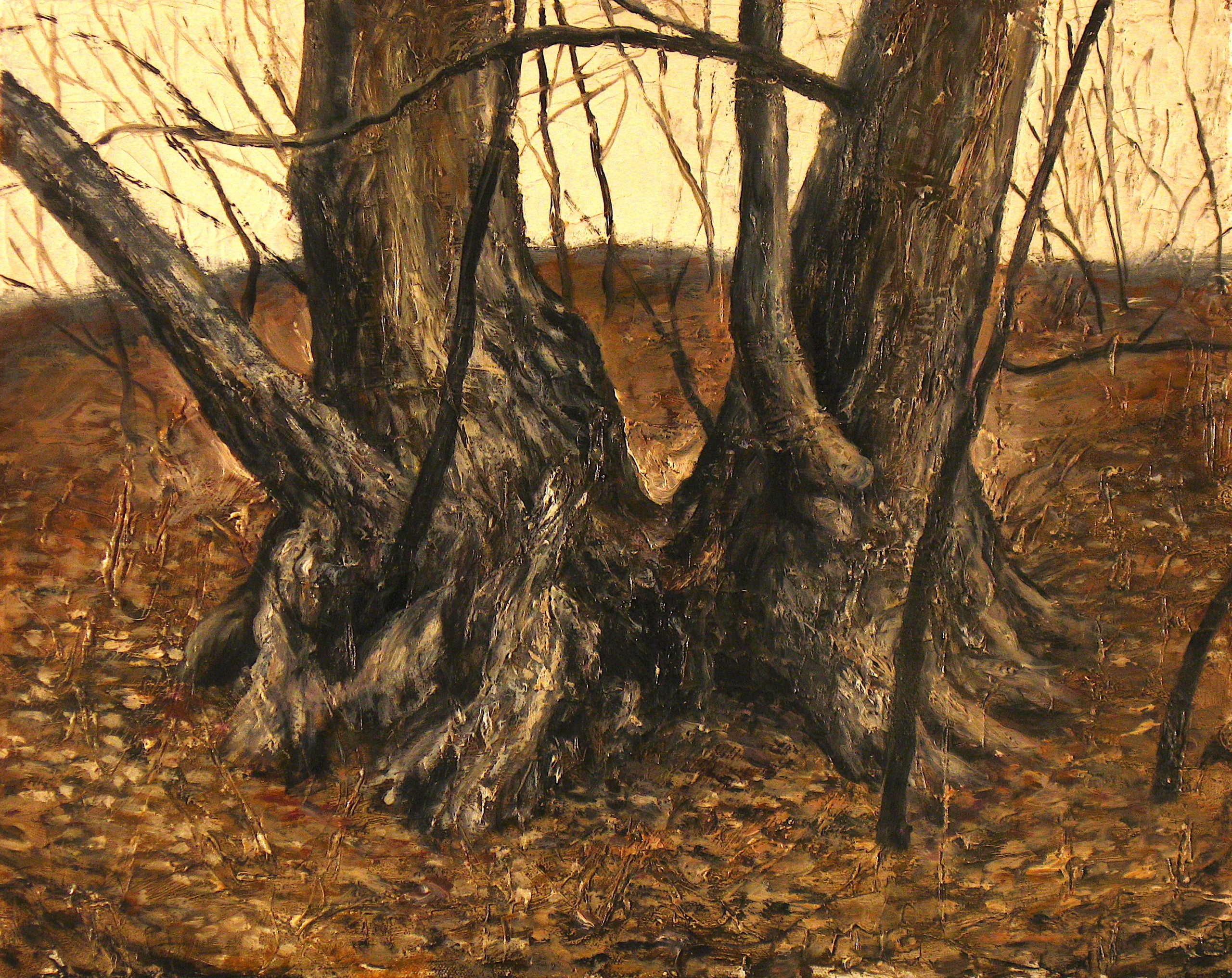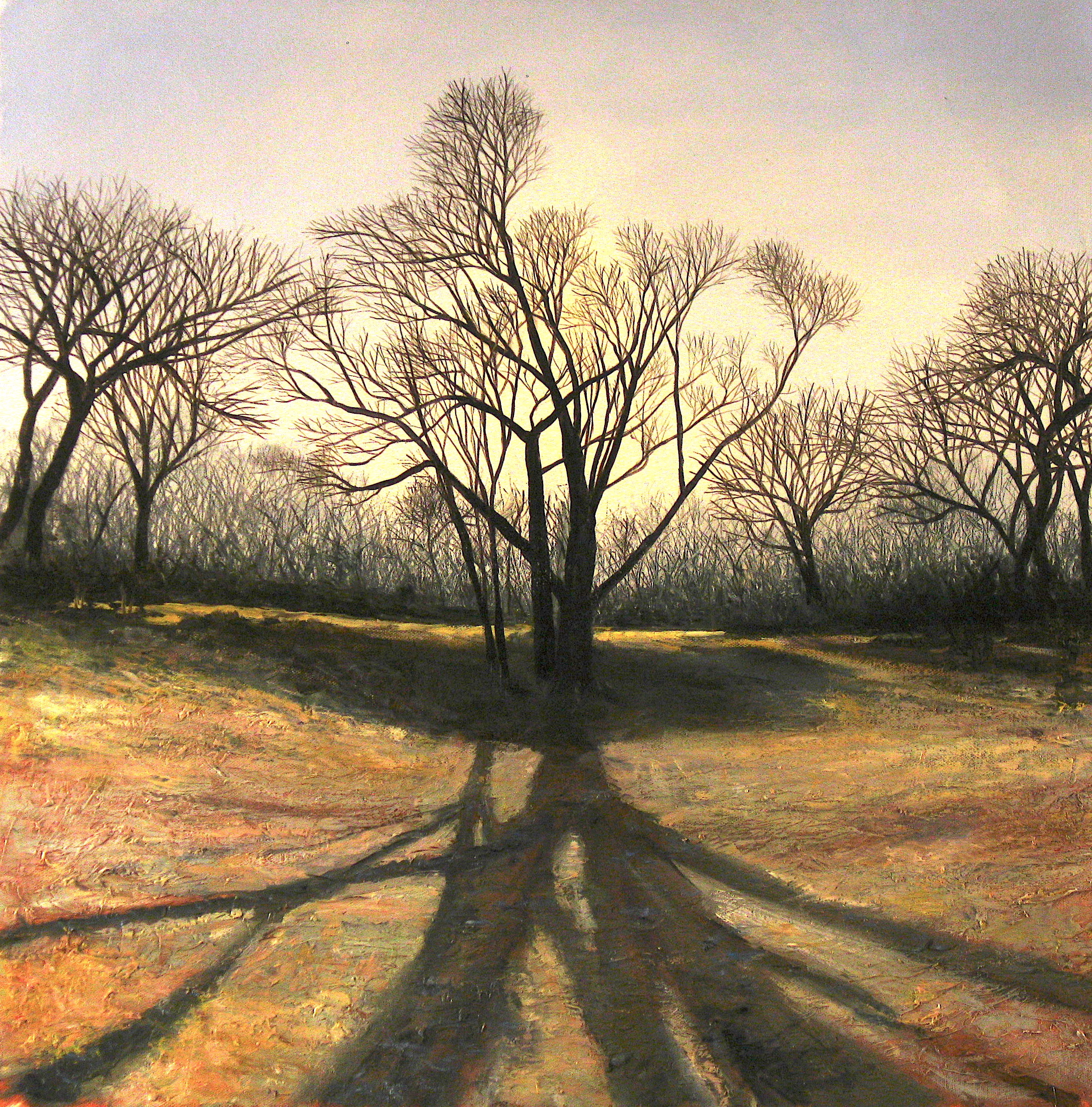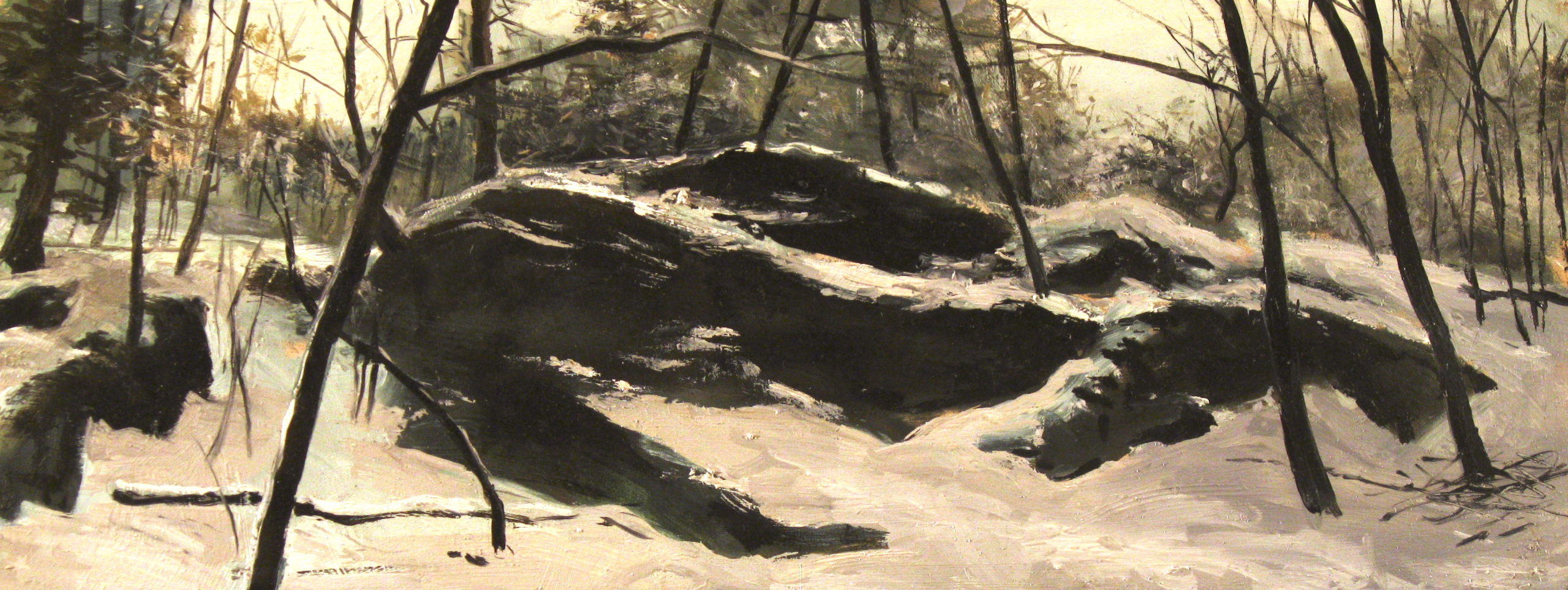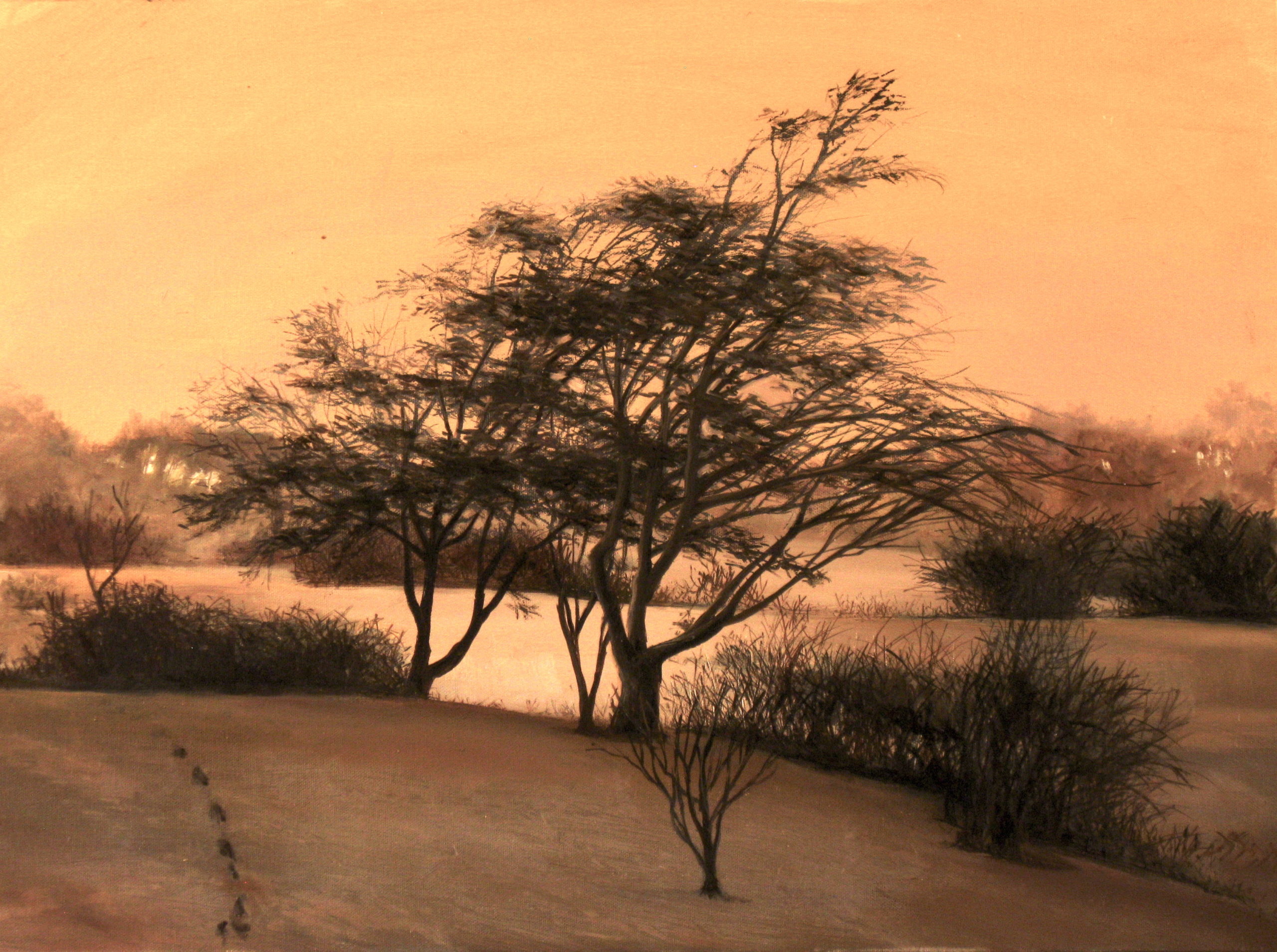If Winter Comes…The Promise of Each Year in the Paintings of Anthony Apesos
Since October, the Arnold Arboretum has had the marvelous opportunity to experience artist Anthony Apesos’s interpretation of our landscape in winter through a virtual exhibition, If Winter Comes…The Promise of Each Year in the Paintings of Anthony Apesos. His rich paintings offer many personal insights about a landscape he has come to know well.
Apesos discovered the Arboretum soon after moving nearby, and brought his young daughter frequently to increase her comfort with nature. His was the “romantic notion that a father and his daughter would learn wildflowers together,” and they did, spotting and identifying many plants over the years. Of course, as an artist, he brought along his sketchbook and a camera, observing and documenting everything in his path. Painting continuously since graduating from Pennsylvania Academy of the Fine Arts in 1979, Apesos became known for his figures and portraits. “Almost always the figures are in landscape,” he admits, “largely because landscape is timeless.” Thus, Apesos considers himself a landscape painter throughout his career.
In 2019, Apesos submitted his recent portfolio to be considered for a show at the Arboretum. Within the new work were a couple sublime winter oil paintings which became the starting point for this show. While these paintings are smaller than usual for his works—which can be up to 7 feet wide—all lend themselves beautifully to our online presentation.


Capturing winter is not as common as other seasons for landscape painters, perhaps due to the feeling that winter is just white from one horizon to the next, or just drab browns and grays. But look closely at Wingnuts or Oaks, and you’ll notice saturated golds stream up and through layers of burnt sienna, while dashes of complementary reds and greens add to the depth. Although he confides that he does use a lot of white to convey the snow over land and plant, prominent shadows can range from an intense blue to subtle violets.

It is within the black pigments that Apesos finds a wide range of color and puts it to use. “I’ve gotten really good at painting really thin branches, empty branches,” he says. Behind Hemlock Hill is a narrative of trees bending to the elements. Those branches tell a story, an articulate examination of the ethos of winter, as well as the surface story of the making of a painting.
Apesos describes in paint what he took in on his many rambles through the collections. He discovered endless variety in the intensity of light at any given time of the day, and the difference between snow in the depths of January and thaw of March. He found the Arboretum, in its size and complexity, to be an endless opportunity to study the seasons. Each time he came, there was something different, something that called out “here, look at me now.”
“Almost always the figures are in landscape, largely because landscape is timeless.”
Tony Apesos
Countless hours hiking in the Arboretum paid off. En plein air sketches and digital photographs found themselves adjusted and skewed once in the studio, a place Apesos describes as “comically messy.” His painting technique is indirect, using under painting and glazing. His concern is for both the surface and the image, because, as he like to point out when teaching art, creating a painting should honor both of those things. “[I love] the ones that have that duplicity,” he says. “They’re both image and object at the same time.”
Teaching art is ingrained in Apesos. As a first grader, he was captivated by the idea of “show and tell” and feels immensely pleased that his life has continued to incorporate a resounding component of showing and telling. He started the graduate program at Leslie University in Visual Arts, one of the oldest and most established residency-based MFAs in the country, and is proud of the strong and lasting connections he made with students over the years. As an art historian, professor, scholar, and writer, he takes much pleasure in the fact that his own painting experience informs what he does in these various fields, finding that they all feed each other.

Articulate as his work, Apesos understands what is important and how the many facets of his life intertwine. His discovery of the beauty of the Arboretum came through consistent observation, a love of nature, and a deep desire to learn by looking at something from every angle. The culmination, for now, is If Winter Comes. And, in the immortal words of poet Percy Bysshe Shelley, “If winter comes, can spring be far behind?”